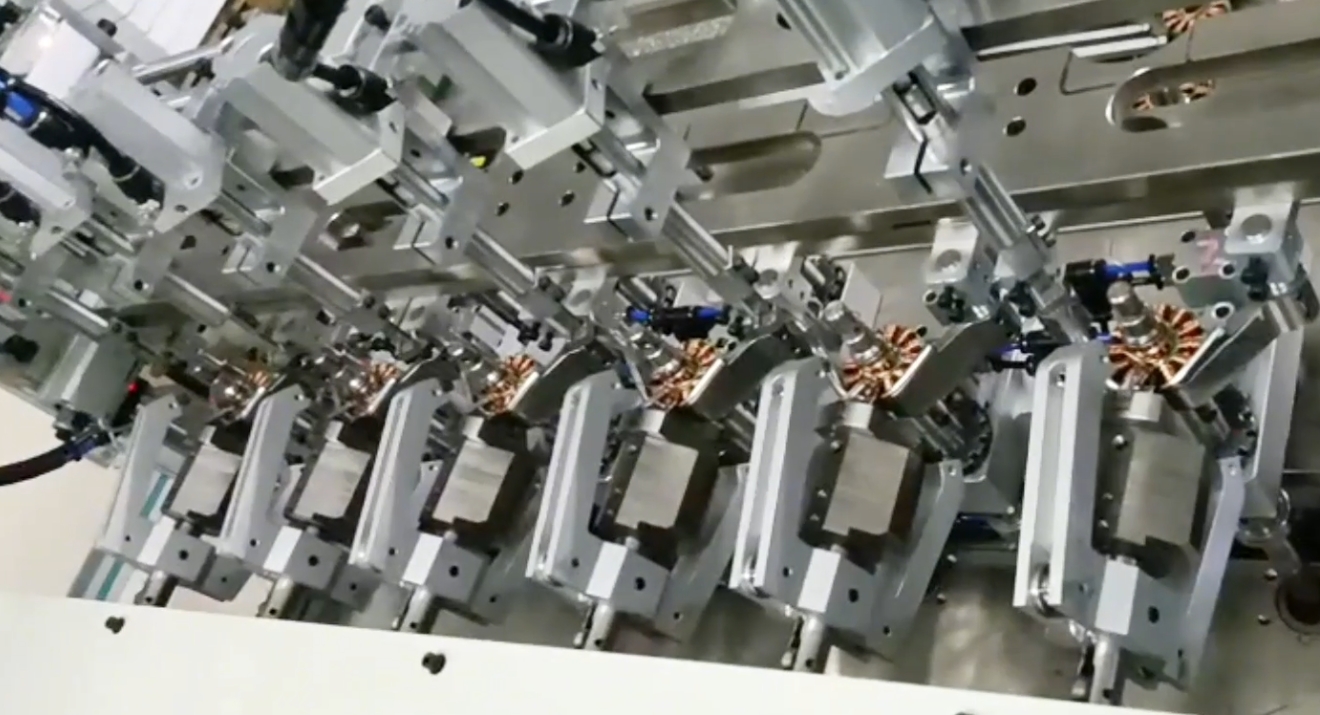Leave the winding process to the machine, and achieve delivery deadlines, quality, and cost efficiency all at once—that's the value of the fully automatic flying shuttle winding machine. It replaces single-station serial processing with multi-station parallel processing, and replaces manual experience with algorithmic wire routing, making “fast, stable, and accurate” the norm for stator winding. The following content thoroughly explains the principles, case studies, and customization options, making it easy for you to quickly assess and implement the solution.

1. How does multi-station achieve “both fast and precise”?
Mechanical coordination:
The flying fork rotates at high speed to feed the wire, the die head precisely enters the slot, and the guard plate protects the wire in real time;
Each station has an independent servo motor, the indexing disk cuts slots at millisecond-level precision, and mold changes are performed without stopping the machine.
Control Coordination:
PLC/IPC serves as the master controller, synchronizing clocks with an error margin of<0.02°;<>
Each workstation has an independent servo drive, with actions precise to the “millisecond-millimeter” level.
Wire Laying Algorithm:
Three-dimensional spatial modeling automatically calculates interlayer clearance to prevent wire compression or scraping;
Tension closed-loop control, real-time compensation for wire diameter changes of ±0.01 mm, consistent coil tightness.
II. Real Production Line Data
Model aircraft motor four-station setup: single slot 8 seconds, overall cycle time reduced by 70%, yield rate 99.8%.
Automotive oil pump dual-station setup: 30 strands of 0.8 mm thick wire wound in parallel, daily production of 2,000 units, wire breakage rate<0.1%.>
III. Confirm three things before customization
Stator parameters: slot count, stack thickness, wire diameter range → determine pitch angle, die head stroke, tensioner specifications.
Process objectives: winding speed, wire arrangement accuracy, whether multi-strand parallel winding → determine flyer torque, guard plate material, servo resolution.
Key components:
Molds made of SKD11 with vacuum quenching, lifespan ≥ 1 million cycles;
Tensioners selected as magnetic hysteresis or servo type, response time < 5 ms;
Indexing system uses a 23-bit absolute value servo, repeatability ±15″.
4. From requirement to mass production in three steps
Requirement clarification → 3D design review → prototype delivery in 38 days.
Acceptance criteria: Continuous operation under no load for 24 hours without alarms; continuous operation under load for 8 hours with Cpk ≥ 1.67; complete set of drawings, programs, and operating manuals delivered in one go.
The fully automatic flying fork winding machine turns “multi-station” into “multi-profit,” ensuring that every enameled wire is precisely positioned and every stator is qualified on the first try.









